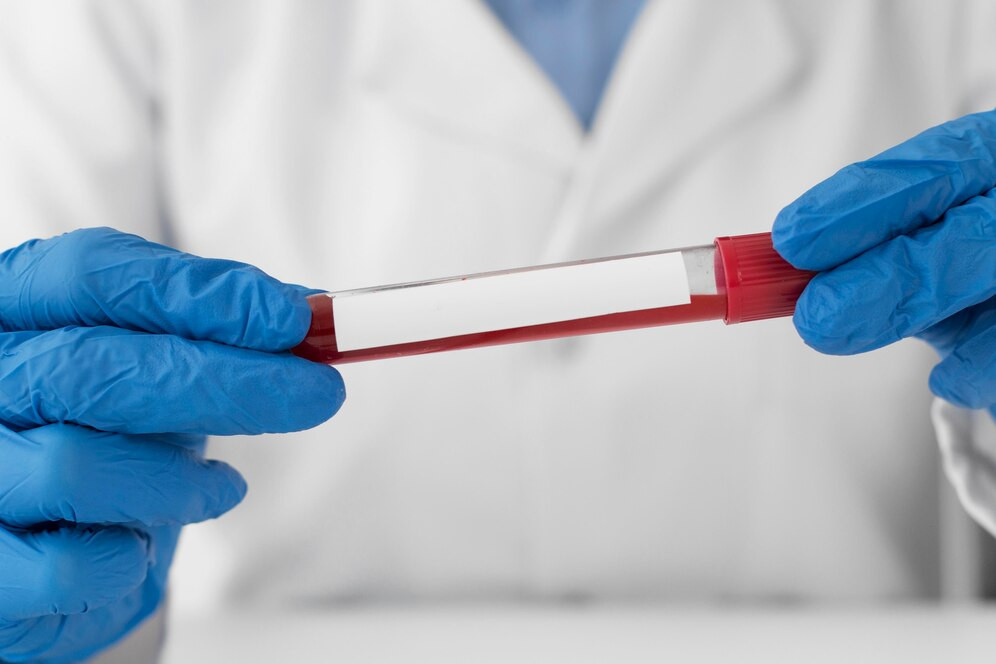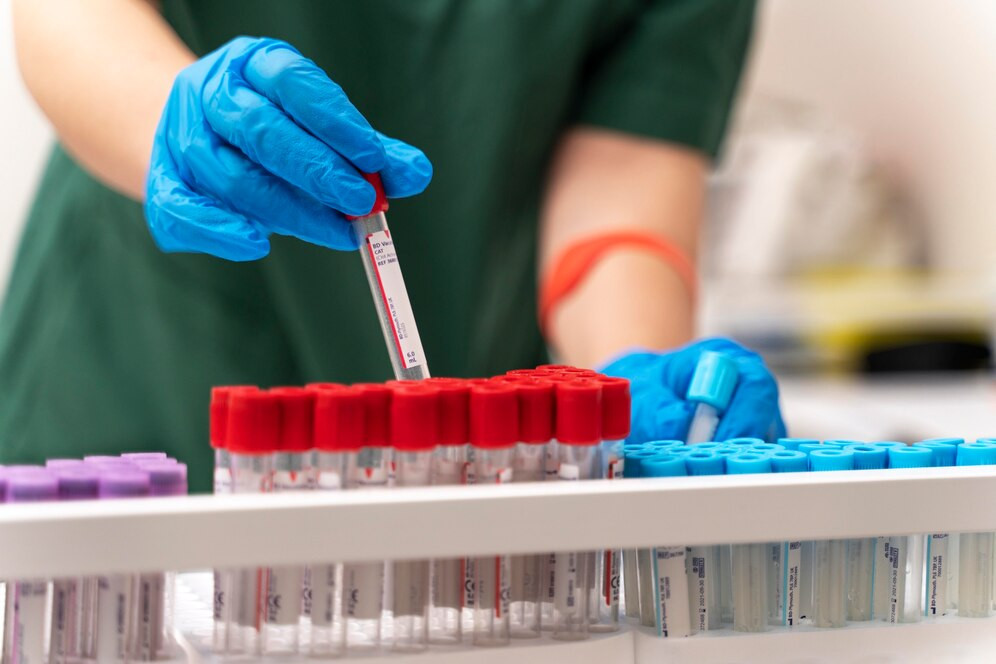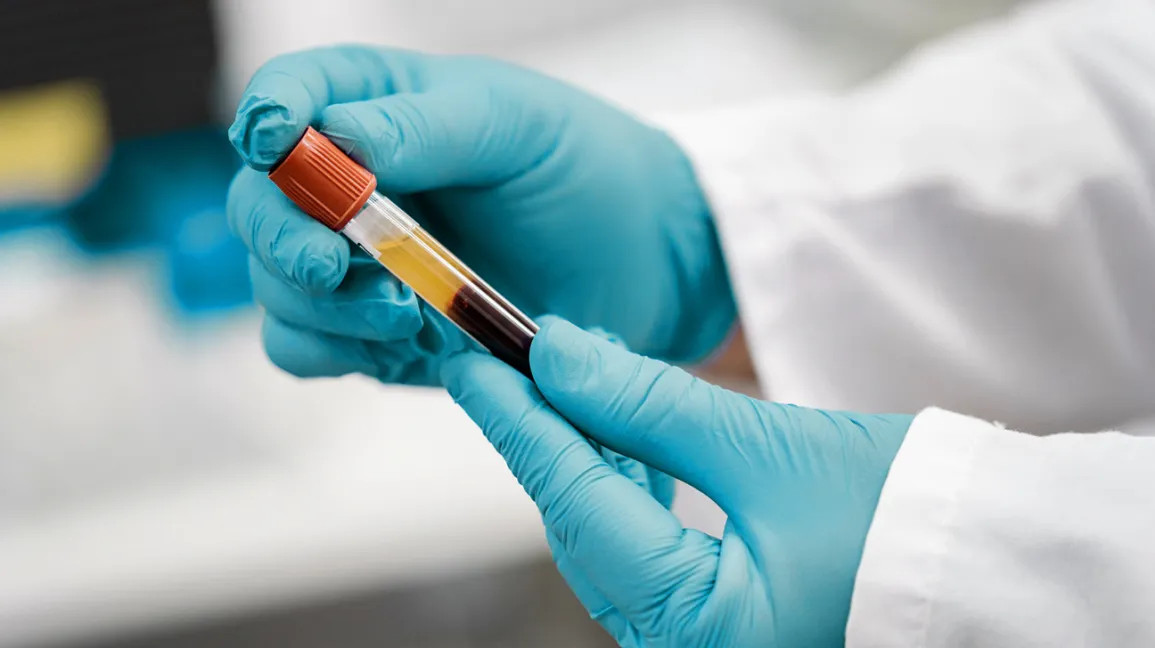Definisi
Pemeriksaan apo B atau apolipoprotein B-100 adalah pemeriksaan darah yang memberikan informasi mengenai risiko seseorang terkena penyakit kardiovaskular, yang memengaruhi jantung dan pembuluh darah. Pemeriksaan ini mengukur kadar apo B dalam darah. Apo B adalah protein yang mengantar zat yang berkontribusi terhadap pembentukan plak dalam aliran darah, di mana plak adalah deposit lemak yang berpotensi menyumbat pembuluh darah arteri.
Apolipoprotein B memfasilitasi pengantaran senyawa lemak ke bagian tubuh yang dituju dan mendistribusikan lemak tersebut ke seluruh peredaran darah. Namun, apo B secara eksklusif mengangkut lemak atau kolesterol yang terkenal dengan citra negatifnya, yaitu kolesterol LDL (lipoprotein densitas rendah), kolesterol VLDL (lipoprotein densitas sangat rendah), dan lemak serupa lainnya. Jenis lipoprotein ini disebut sebagai “kolesterol jahat" karena berpotensi untuk membahayakan jantung dan pembuluh arteri bila jumlahnya berlebihan.
Umumnya, pemeriksaan kadar Apo B sering diminta bersamaan dengan pemeriksaan kolesterol LDL sebagai bagian dari profil lipid. Menurut pendapat dari banyak ahli, pemeriksaan kadar apo B memiliki kemungkinan untuk melampaui pemeriksaan kolesterol LDL sebagai indikator risiko penyakit kardiovaskular yang lebih baik.
Kadar apo B bisa dievaluasi untuk membantu meningkatkan prediksi risiko pada individu yang memiliki banyak faktor risiko kardiovaskular. Namun bertentangan dengan pandangan ini, sejumlah ahli juga berpendapat bahwa apo B hanya sedikit lebih unggul dan tidak menyarankan untuk menggunakannya sebagai pemeriksaan rutin. Nilai klinis dari apo B dan penanda risiko penyakit jantung lainnya, seperti apo A-I, Lp(a), dan hs-CRP, belum sepenuhnya terbukti efisiensinya.
Kami juga memiliki artikel mengenai kolesterol LDL yang bisa Anda baca di sini: LDL - Definisi, Indikasi dan Kontraindikasi.
Indikasi
Bersama dengan pemeriksaan lemak lainnya, pemeriksaan apo B digunakan untuk menilai risiko penyakit kardiovaskular pada seseorang.
Pemeriksaan ini tidak digunakan sebagai pemeriksaan skrining rutin pada masyarakat umum. Biasanya pemeriksaan ini bisa diminta oleh dokter jika seseorang memiliki riwayat keluarga dengan penyakit jantung dan/atau hiperlipidemia (peningkatan kadar lemak dalam darah, seperti kolesterol dan trigliserida). Ketika seseorang diketahui memiliki kadar trigliserida tinggi, tes apo B dapat dilakukan dengan tes lain untuk membantu diagnosis kadar lipid abnormal.
Selain itu, pemeriksaan ini juga bisa dilakukan untuk menilai efektivitas terapi obat penurun kadar lemak atau antikolesterol. Terkadang, pemeriksaan apo B dijalankan untuk membantu mendiagnosis suatu kondisi genetik yang membuat produksi apo B di tubuh berlebihan atau tidak mencukupi.
Merupakan hal yang normal bila permintaan pemeriksaan apo B dilakukan bersama dengan pemeriksaan apo A-I. Rasio apo B/apo A-I terkadang digunakan sebagai alternatif dari pemeriksaan rasio kolesterol total/HDL, yang menjadi bagian dari pemeriksaan profil lipid, untuk menilai risiko berkembangnya penyakit kardiovaskular pada seseorang.
Kontraindikasi
Tidak ada individu yang dikontraindikasikan dalam melakukan pemeriksaan kadar apo B dalam darah; setiap orang bisa menjalani pemeriksaan darah untuk memantau kadar apo B dalam tubuhnya.
Persiapan Sebelum Pemeriksaan
Meskipun puasa tidak wajib dilakukan pada pemeriksaan apo B, puasa selama minimal 12 jam sebelum pemeriksaan sering disarankan bila pemeriksaan ini dilakukan bersama pemeriksaan lain yang memerlukan puasa sebelumnya, seperti pemeriksaan kolesterol LDL, HDL dan trigliserida.
Pengobatan dan kebiasaan tertentu berpotensi memengaruhi hasil pemeriksaan. Anda sebaiknya memberitahu dokter Anda mengenai pola makan (bila Anda suka makan makanan tinggi lemak), riwayat penyakit (contohnya diabetes), atau obat-obatan yang sedang rutin dikonsumsi, seperti statin. Perlu atau tidaknya Anda untuk berhenti mengonsumsi obat-obatan ini sebelum pemeriksaan dilakukan akan tergantung dengan instruksi dokter Anda.
Prosedur Pemeriksaan
Tenaga kesehatan akan mengambil sampel darah yang dibutuhkan untuk pemeriksaan dari pembuluh vena, umumnya dari vena di lengan Anda, menggunakan jarum suntik kecil. Setelah jarum dimasukkan, sejumlah darah akan diambil dan dimasukkan ke dalam tabung reaksi. Anda mungkin merasa sedikit nyeri saat jarum dimasukkan atau dikeluarkan.
Nilai Normal dan Abnormal
Hasil pemeriksaan dilaporkan dalam miligram per desiliter (mg/dL). Hasil normal dari pemeriksaan ini bisa bervariasi antara pria dan wanita. Di bawah ini adalah rentang referensi untuk pemeriksaan Apo B:
- Rentang nilai yang optimal untuk pria dewasa berkisar antara 66–133 mg/dL
- Rentang nilai yang optimal untuk wanita dewasa berkisar antara 60–117 mg/dL
Nilai referensi di atas bisa sedikit berbeda antar laboratorium. Kadar apo B normal pada individu adalah di bawah 100 mg/dL. Peningkatan kadar apo B menunjukkan bahwa Anda memiliki peningkatan risiko penyakit kardiovaskular di kemudian hari.
Hasil dan Saran (Pemeriksaan Lanjutan)
Kadar apo B yang tinggi dikaitkan dengan peningkatan risiko penyakit kardiovaskular dan juga berhubungan langsung dengan peningkatan kadar kolesterol LDL serta kolesterol non-HDL. Peningkatan kadar kolesterol dapat terjadi akibat pola makan yang tinggi dengan lemak dan/atau berkurangnya kemampuan tubuh untuk menghilangkan kolesterol LDL dari sirkulasi darah.
Kelainan kadar apo B mungkin berhubungan dengan faktor lain. Sejumlah faktor di bawah ini berpotensi meningkatkan atau menurunkan kadar apo B di tubuh.
Kadar apo B yang rendah dapat ditemukan di:
- Penggunaan obat-obatan tertentu, seperti:
- Estrogen
- Statin
- Niasin atau vitamin B3
- Tiroksin
- Hipertiroid (kondisi yang terjadi karena aktivitas kelenjar tiroid yang berlebihan)
- Malnutrisi
- Sindrom reye
- Penurunan berat badan
- Kondisi sakit berat
- Sirosis hati
- Prosedur bedah
Kadar apo B yang tinggi dapat ditemukan di:
- Penggunaan obat-obatan tertentu, seperti:
- Progestin (progesteron sintetis)
- Obat diuretik (obat yang bisa meningkatkan pengeluaran cairan melalui urine)
- Antihipertensi beta-blocker
- Androgen
- Diabetes
- Sindrom nefrotik, sejenis gangguan ginjal
- Hipotiroid, kondisi di mana kelenjar tiroid tidak memproduksi hormon tiroid yang cukup di tubuh
- Kehamilan (peningkatan apo B hanya bersifat sementara selama kehamilan)
Konsultasikan ke Dokter yang Tepat
Pemeriksaan apo B bukan pemeriksaan yang umum dilakukan. Proses untuk mengetahui penggunaan optimal dari pemeriksaan apo B sebagai salah satu penanda risiko di masa depan untuk penyakit jantung masih berlangsung. Pada kondisi tertentu, pemeriksaan ini bisa memberikan informasi tambahan mengenai kesehatannya, meskipun tujuan pemeriksaan bukan untuk menggantikan pemeriksaan lemak yang saat ini banyak tersedia di kalangan masyarakat.
Untuk mendapat penjelasan terbaik mengenai hasil pemeriksaan Anda, Anda bisa berkonsultasi dengan dokter umum atau dokter spesialis penyakit dalam. Penafsiran mengenai hasil pemeriksaan Anda akan diinterpretasikan bersama faktor lain, sesuai kondisi kesehatan, faktor risiko, dan gejala penyakit Anda secara keseluruhan.
Mau tahu informasi seputar hasil pemeriksaan laboratorium, radiologi, dan lainnya? Cek di sini, ya!
- dr Hanifa Rahma
Apo B Test (Apolipoprotein B). (2021). Retrieved 27 June 2023, from https://www.testing.com/tests/apo-b/
Apo B Test. (2023). Retrieved 27 June 2023, from https://my.clevelandclinic.org/health/diagnostics/24992-apolipoprotein-b-test
What is the Apolipoprotein B-100 (Apo B) Test?. (2021). Retrieved 27 June 2023, from https://www.webmd.com/cholesterol-management/what-is-apolipoprotein-b-test
Apolipoprotein B-100. (2023). Retrieved 27 June 2023, from https://www.urmc.rochester.edu/encyclopedia/content.aspx?contenttypeid=167&contentid=apolipoprotein_b100
Is ApoB More Important to Measure than Cholesterol?. (2023). Retrieved 27 June 2023, from https://www.verywellhealth.com/apolipoprotein-b-apob-heart-disease-predictor-7104653












